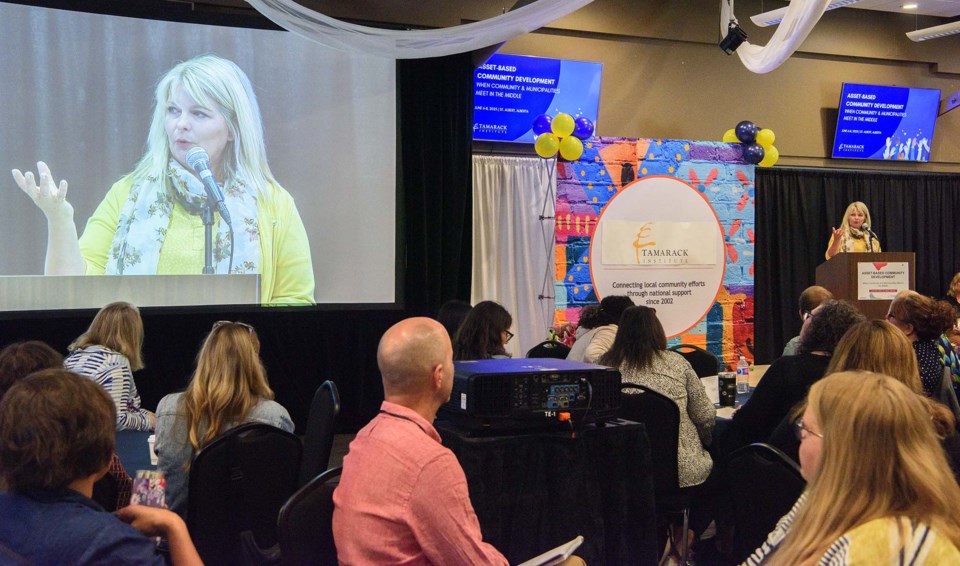Cities can become safer and more sustainable if they tap into the power of neighbourhoods, experts said at a recent St. Albert conference.
About 150 people were at the St. Albert Curling Club June 6-8 for an international conference on asset-based community development. The conference was co-hosted by the City of St. Albert and the community group Connect Wetaskiwin.
Most communities look at problems from a deficit perspective, said Heather Keam, associate director with the Tamarack Institute, which organized the conference — a place lacks something, so you bring in an outside expert to create a program to address the lack. This approach isn’t sustainable, as the problem returns when the experts and programs leave.
“We need to start shifting power so communities can step up and solve their own problems,” Keam said.
Asset-based development looks to tap local skills to build local solutions, Keam said. This conference was meant to help governments and grassroots organizations work together to solve problems.
Being neighbourly
Speaker Jim Diers, who served 14 years with Seattle’s Department of Neighbourhoods, spoke on how to create effective partnerships between communities and government.
“For too long, governments have seen themselves as service providers (while thinking) of people as customers,” he said in an interview, adding this results in a one-way relationship.
“We’ve basically lost our democracy.”
Diers said his department set up mini city halls in Seattle neighbourhoods so residents could access all city departments in one place. Each mini-hall had a specialist whose job was to link up with area leaders to understand local issues and become a trusted link between the city and the community.
This was paired with a neighbourhood matching fund which financed projects important to specific neighbourhoods that otherwise might not draw the city’s attention, Diers continued. By combining volunteer labour with city dollars, Seattle has built thousands of community gardens, playgrounds, and other amenities, resulting in engaged citizens, local food, and dollars saved.
Community connections help in emergencies, Keam noted. Research on the 1995 Chicago heat wave found people in connected communities were more likely to survive than those in isolated ones, as connected residents knew which neighbours would need help.
Angie Dedrick, community development co-ordinator with the City of St. Albert, said members of the city’s Neighbourhood Connector program proved vital during the pandemic, reaching out to residents in need when the city could not.
“Your first responder in a crisis is not a first responder,” Keam said.
“It’s your neighbour.”
St. Albert Mayor Cathy Heron told conference-goers the city had bolstered neighbourhood connections through block parties. About half of the city’s streets have had block parties in the last 15 years, with other residents making connections through the library’s neighbourhood connection kits. She recalled how one such block party helped her connect with a local youth who was troubled by drugs at school.
“It’s not just a block party. It’s about building a relationship with the kid next door,” Heron said.
Heron said cities can support connected neighbourhoods by building sidewalks on both sides of the street for accessibility, providing parks and gathering places in every region, and ensuring residents have transit and infrastructure that stands up to global heating.
“Community does not just happen. Community is something we build.”




